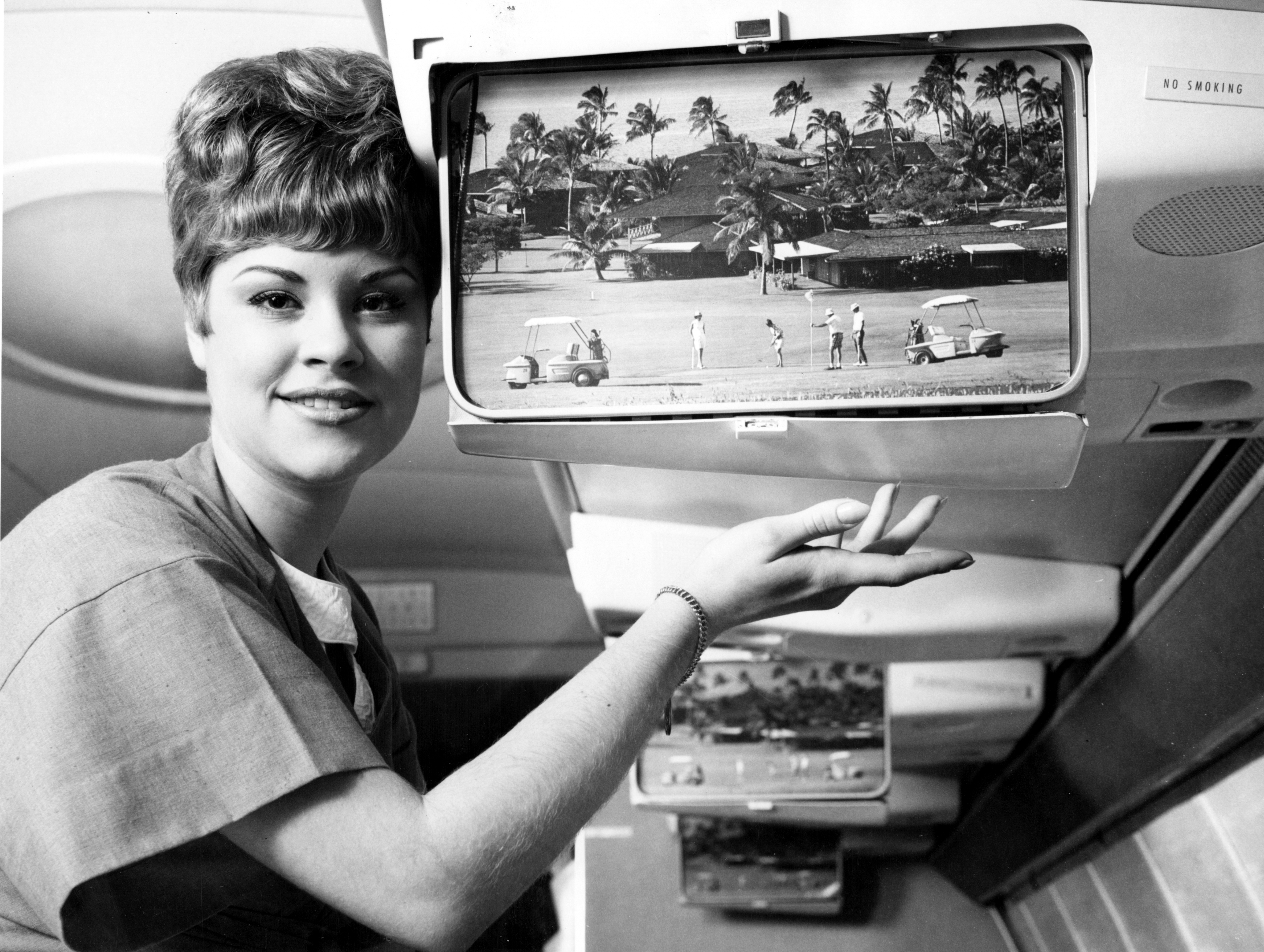Written for the Airline Passenger Experience Association’s APEX Experience Magazine – Issue 8.3 – June-July 2018
It’s been almost a century since the first, primitive experiments with in-flight film projection took place in an Aeromarine Airways Curtis F5L aircraft. It was 1921, and the 11 passengers on a sightseeing flight over Chicago were shown a silent movie promoting the city.
But it wasn’t until 1961 that David Flexer’s Inflight Motion Pictures brought regular in-flight entertainment to passengers on Trans World Airlines’ early jets.
A single movie was spooled onto a giant 26-inch diameter reel of 16mm film that was mounted in the airplane’s ceiling. The film was fed from the front of the aircraft, and as it traveled through each of the three or four cabins, it passed through a projector.
Passengers watched a single screen at the front of the cabin and listened to the audio track using uncomfortable hollow-tube earplugs. If everything worked properly, the film didn’t break, and the audio was properly synchronized to the film.
The ultimate, and perhaps most absurd evolution of this technology appeared in American Airlines’ Astro-Color system, manufactured by Bell & Howell. Starting from a single, massive 30-inch reel in a forward cabinet, the film was fed to 20 or more small projection units mounted above the seats in the airline’s Boeing 707s.
Perhaps the best description of Astro-Color comes from the late John Norman White, the long-time editor and publisher of Avion, the precursor to APEX Experience magazine. White was the industry’s unofficial, self-appointed, but well-respected historian.
“The film started out from the forward, starboard section of the airplane and followed a 260-foot path that involved six 90-degree turns,” explained White in his 1994 article, “A History of Inflight Entertainment.”
“On some aircraft, the film trail approached three hundred feet. What this meant was that a first-class passenger sitting in a seat on the port side would see scenes and hear sound seven and a half minutes after the passenger on the starboard side of the airplane had experienced it.”
“It was marvelously innovative … but it was also impractical and short lived.
By the 1970s, small, easy-to-handle 8mm film cassettes replaced the unwieldy 16mm reels, but only for a short time. Video display systems were soon introduced and quickly became the standard for IFE.
Nowdays, of course, the cabin crew doesn’t have to worry about the film breaking on the one-and-only movie. On-board digital storage holds the hundreds of hours of content shown on seat-back screens or delivered by Wi-Fi to personal devices – and technology.
